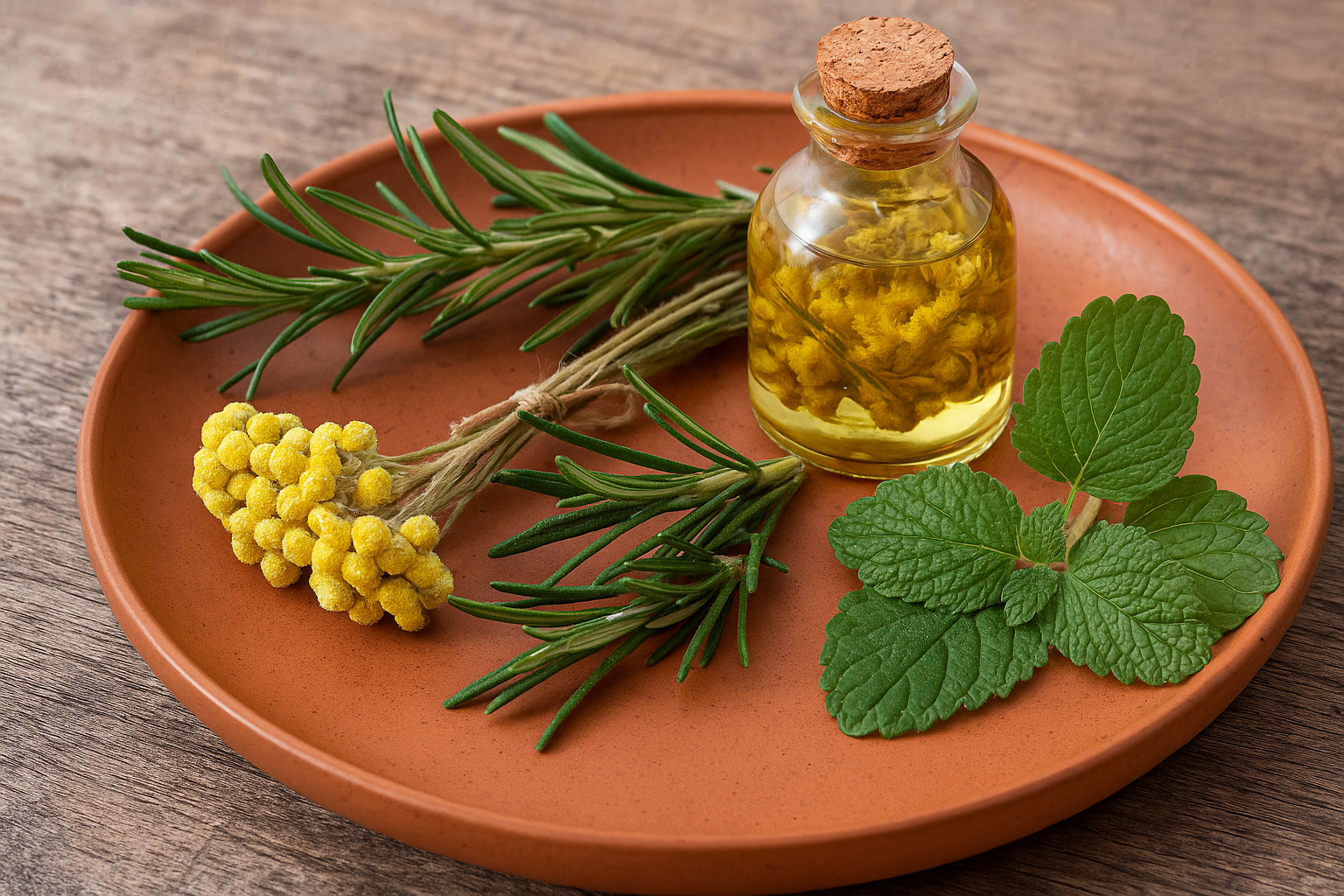In the culture of Southern Brazil, herbs were more than remedies. They were family secrets guarded and shared by Gaúcho grandmothers.
These women knew exactly which plant could calm a child, heal a wound, or perfume the home. Their kitchens smelled of marcela tea, rosemary branches, and boldinho leaves.
Their knowledge was practical but also magical, weaving health with memory.
Today, many of these traditions risk being lost. Industrial medicine and synthetic fragrances replaced natural solutions. Yet the wisdom of Gaúcho grandmothers still shines.
By recovering their secrets, we not only honor our heritage but also learn natural ways to improve modern life.
The Role of Grandmothers in Herbal Knowledge
Grandmothers were the keepers of tradition. They collected herbs at the right season, dried them with care, and stored them for the family. Children watched them hang bundles in kitchens or prepare infusions on cold nights.
This knowledge was passed orally. Recipes for teas or remedies were never written but lived in memory. Their authority came not from books but from experience. Every herb they used carried not just healing but trust.
The Most Cherished Herbs of Gaúcho Grandmothers
Marcela for Peaceful Sleep
Marcela tea was the universal cure for restlessness. Grandmothers gave it to children who could not sleep or to adults with anxiety. The sweet floral aroma filled bedrooms with calm.
Even today, marcela remains a gentle remedy. Dried flowers in sachets also perfume wardrobes, keeping clothes fresh and peaceful.
Carqueja for Digestion
After a heavy meal, grandmothers always served carqueja tea. Its bitterness was a sign of its strength. Families trusted it to cleanse the body and support the liver.
Beyond tea, dried carqueja branches were kept in jars. Their earthy smell reminded everyone of resilience and balance.
Rosemary for Memory and Protection
Rosemary was planted in gardens and kept near doors. Grandmothers said it was for memory and protection. A sprig was sometimes burned to clear the air.
Rosemary tea improved focus, while bundles in kitchens spread freshness. The aroma became a symbol of clarity and strength.
Boldinho for the Stomach
When children complained of stomach pain, boldinho tea was the answer. The mint-like fragrance lifted the spirit while cleansing digestion.
Grandmothers also placed boldinho leaves in water bowls around the house. The fresh scent was believed to purify and protect.
Guaco for the Lungs
Coughs and colds were treated with guaco. Its sweet herbal tea eased breathing. Some families also prepared homemade syrups combining guaco with honey.
The plant’s presence near the home was both practical and symbolic. It meant health was always close.
White Sage for Cleansing
Sálvia branca was burned in rituals to cleanse homes. Grandmothers walked through rooms with smoking bundles, believing the herb pushed away negativity.
Its smoky aroma lingered, leaving a sense of renewal. This practice is still used today as spiritual aromatherapy.
How Gaúcho Grandmothers Preserved Herbs
Drying Bundles in Kitchens
Bundles of marcela and rosemary often hung from wooden beams. The air carried their fragrance, while the plants slowly dried.
This method ensured herbs were always ready for tea or rituals. The sight of herbs hanging in kitchens became part of Gaúcho identity.
Cloth Bags and Jars
Grandmothers stored dried herbs in cloth bags or glass jars. Each container was carefully labeled, even if only with a simple string or note.
They knew that light and moisture ruined potency. Their preservation skills were precise and practical.
Applying These Secrets Today
Herbal Teas for Wellness
Marcela for sleep, carqueja for digestion, guaco for coughs, and boldinho for stomach relief are still valid today. Preparing these teas keeps traditions alive while offering natural support.
Aromatic Uses for Homes
Sachets of marcela or rosemary can freshen wardrobes. Bowls of boldinho water perfume rooms. Sprigs of rosemary on windowsills protect against negativity.
These simple practices replace synthetic air fresheners with cultural authenticity.
Natural Remedies for Families
Homemade guaco syrup with honey, rosemary baths for clarity, and boldinho infusions for children’s stomachs show how tradition meets modern needs.
These remedies remain relevant because they are safe, accessible, and effective when used correctly.
Ritual Uses for Cleansing
White sage bundles are still powerful tools for energy cleansing. Walking through a home with burning sage connects today’s families with ancestral rituals.
The aroma not only purifies but creates emotional balance.
Cultural Meaning of Herbal Secrets
The secrets of grandmothers were more than recipes. They were lessons in resilience, care, and connection to nature.
Every cup of tea was an act of love. Every dried bundle hanging in kitchens was a reminder of heritage. Their knowledge gave families not only health but identity.
Scientific Confirmation of Traditional Knowledge
Modern research confirms much of what grandmothers taught. Carqueja supports liver function. Rosemary enhances memory. Guaco helps with respiratory conditions. Marcela has calming compounds.
What science proves today was already known through experience. Tradition is now validated by laboratories.
Conclusion
The secrets of herbs used by Gaúcho grandmothers are treasures of culture and wellness. From marcela and carqueja to rosemary, boldinho, guaco, and white sage, these plants continue to heal, perfume, and inspire.
Applying them today means honoring ancestors and embracing natural living. Their power is not only in chemistry but in memory, love, and tradition.

Marcela Cardozo is passionate about Southern Brazilian traditions and the cultural stories carried through natural scents. She blends knowledge of native herbs, essential oils, and regional rituals to create practical and inspiring content. Her writing connects ancestral wisdom with modern living, offering readers simple ways to bring authenticity, well-being, and meaning into their everyday lives.
